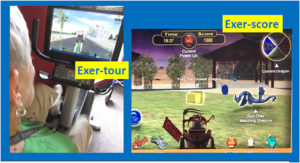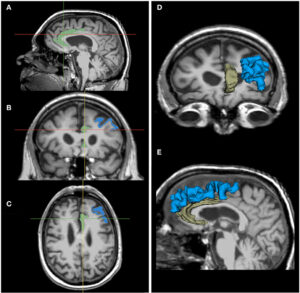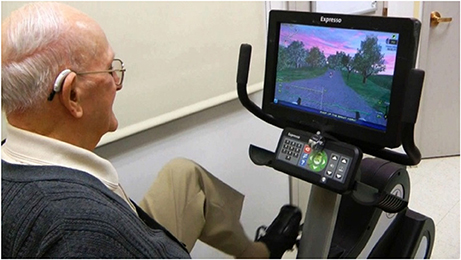VirZOOM is one of the most successful mainstream fitness apps around. It’s helped many of our readers, even a few we’ve highlighted, to lose weight and stay fit. The system offers constant new experiences. Future technology will utilize recumbent bicycles to recreate relaxing rides through the woods. It’s pretty safe to say the nature of the spin class is changing entirely thanks to VR.
It turns out that all of that VR exercise, what scientists are calling “exergaming,” has some significant impacts on the brain health as well. We learned that Virtual Reality could help re-wire the brains of Parkinson’s patients, and a new study suggests a similar benefit in Alzheimer’s.
What is Exergaming
You already know what exergaming is if you follow this blog, but it’s a term that applies to physically engaging video game experiences. It’s essential that these are virtual experiences because exergaming best impacts a class of people who can’t play traditional sports. Some of the earliest examples were balance board games like Wii Fit, but rhythm games like Dance Dance Revolution also applied to this category.

Exergaming is non-strenuous, relaxing and fun. It’s designed to engage both the brain and the body every time you enter a virtual world. You are training your mind for improved:
- Ambidextrous training exercises
- Reaction timing
- Hand-eye coordination
- Decision making
Exergaming also stimulates your emotions and senses. Heightened brain activity, coupled with action in the body, help “exercise” the full body and brain simultaneously. In a virtual world, the experience and difficulty are also highly customizable, so any patient can find a unique experience.
Study and Results
For several months, patients would sit inside of what the team calls “the cybercycle.” There, patients would pedal along a virtual route projected on a screen before them inside two studies. Exerscore had patients running over matching targets to add to their high score, while Exertour asked users to navigate a course.
The study noted a few essential interactions that might seem underrated. Patients moved faster or slower as the terrain dictated, and patients interviewed seemed to exhibit better vocal faculties. Also, patients experienced both applications and were found to exhibit higher Exerscores over time. The improved scores suggest patients learned who to play the game better, and were maybe thinking about it outside of the testing room.
Obviously, a sample size from a small community of people isn’t enough to make sweeping generalizations over. However, these results are in line with what we’ve already seen in VR health: improved brain function, better reaction times, better physical fitness which contributes to enhanced agility.
Will it stop Alzheimer’s entirely? No. However, patients did perform better or equal in verbal cognition and some physical exams. It’s also encouraging to find that many patients had scores that seemed to “catch up” to baselines, suggesting real mental progress.
Key Takeaways
Exergaming is a useful step in a barrage of treatment options to improve brain function in aging patients or athletes with brain injuries. The key is to avoid strenuous exercise, opting for a more balanced approach. Focus on experiences you can physically engage without overexertion, especially if those experiences require any decision making or mental cognition.
Final Thoughts
Gaming engages our mental faculties more than we’d previously thought and being in VR signals to the brain that we see something real. The baseline in this study was an essential step in showing how VR can improve or maintain mental faculties. Creating a system that helps patients get moving, especially when they otherwise would not, is an inexpensive form of physical fitness anyone can do at home.

However, an important takeaway from this study is that the most significant benefit came from older adults interacting with the cycle. It’s not enough to merely play VR games; one must have a device to use in the real world. As haptics and wearables become a better-integrated aspect of VR, we expect to see more use cases for healthcare. It will be exciting to test the limits of what VR can do for brain health, the elderly, and those suffering from traumatic brain injuries.











